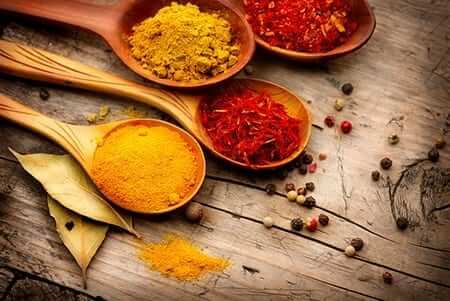People with diabetes need to watch their intake of sugar, salt and processed foods. You can still add plenty of flavors to your foods with an array of tantalizing spices. Discover tasty ways to enhance your favorite healthy foods with delicious winter spices.
- While fresh produce might be lacking in the winter, there are plenty of flavorful foods people with diabetes can enjoy. The winter pantry should be stocked with rich herbs and spices that add sweet scent and delicious flavors to your foods. Put them in sauces, roasted meats, crock pots, stews and gravies. Add winter root vegetables to diversify your daily diet. Discover an array of spices that can make diabetic foods taste better. Use variety in your daily foods.
- Winter spices have bold flavors. Add them lightly to savory dishes and fruits. Store spices properly to ensure they maintain flavor. The volatile oils in spices give them distinctive flavors. If spices are exposed to air, they can lose flavor. Store them in airtight containers away from extreme humidity, light and heat. Try to buy them in small quantities and grind your own whole spices for the freshest flavor.
- Allspice is a cured berry that comes from an evergreen tree that grows in tropical environments. This winter spice is a rich, dark brown. Use allspice to add a burst of flavor to tomato sauces, red meat, barbecue sauces and seafood. Allspice has anti-inflammatory and anti-flatulent [gas] properties. It may also bring a warm, soothing feeling to help reduce stress.
- Cardamom is a traditional winter spice that comes from India. It tastes great in savory and sweet foods and should be added to rice and curries. Studies have shown cardamom can prevent cancer in animals. It also helps enhance detoxification by the liver.
- Cinnamon is one of the oldest known spices in the world. It has a sweet, woody taste that makes it perfect to add to baked apples, stewed fruits, low-fat yogurt, oatmeal, cold cereal, coffee and tea. Studies have shown cinnamon may help reduce levels of triglycerides and cholesterol in people with type 2 diabetes. It has been shown to help reduce blood sugars in adults who have diabetes and may help prevent diabetes.
- Cloves are made from the dried flower buds that come from a tree that is native to Indonesia. This pungent spice is wonderful in baked beans, pea soup, baked fruits, pickles and roasted meats. The distinctive flavor of cloves comes from eugenol, a potent anti-inflammatory. Diabetes is often associated with inflammation that can lead to heart disease, obesity and other health complications. A spice with anti-inflammatory properties may be helpful.
- Ginger is one of the most famous winter spices, probably because of the holiday passion for gingerbread men. It is one of the oldest Asian spices. Ground ginger is spicy, but not too sharp. It works wonderfully with seafood, stir-fries, tea, roasted meats and vegetables. Ginger can relieve an upset stomach, improve circulation and has antifungal and antibacterial properties.
- Nutmeg is an aromatic spice commonly associated with winter. It is considered to be among the strongest of all the sweet spices. This oily spice can be sprinkled over desserts, white sauces and vegetables such as squash and spinach. Nutmeg has a calming effect to reduce stress and fatigue and boost concentration. It can also help remove toxins for better kidney and liver health as well as reduce abdominal pain.
- Turmeric is a mild, yellow Indian spice that tastes great in stews, soups and pasta sauce. This versatile spice has been shown to relieve indigestion and help stomach ulcers as well as reduce free-radical stress in people with inflammation. Turmeric has also been associated with protective effects against cancer.
Spices are more than delicious – they are healthy, too. Certain spices have been shown to have anti-inflammatory properties to reduce complications associated with diabetes. Add plenty of winter spices to your favorite healthy foods for a burst of flavor and optimum well-being.







Leave A Comment